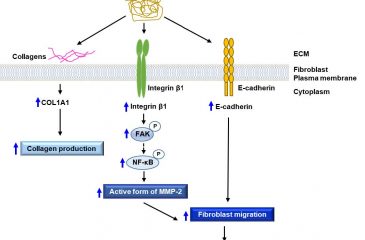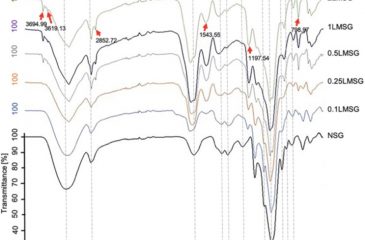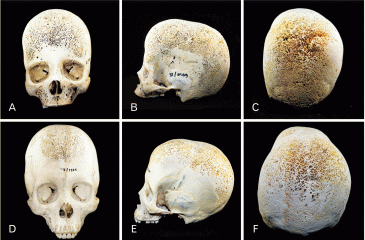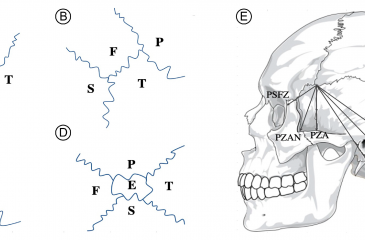SDGs 3. GOOD HEALTH AND WELL-BEING
-
In vitro evaluation of wound healing potential of sulfated galactans from red alga Gracilaria fisheri in fibroblast cells
Highlight: การปรับโครงสร้างสารสกัดธรรมชาติซัลเฟตกาแลคแตน (NSG) จากสาหร่ายผมนางที่มีขนาดใหญ่ด้วยกรด trifluoroacetic acid ได้สารซัลเฟตกาแลคแตนที่มีน้ำหนักโมเลกุลขนาดเล็ก (LMSG) ที่มีหมู่เคมีออกฤทธิ์ต้านอนุมูลอิสระสูงขึ้นและป้องกันการตายของเซลล์ไฟโบรบลาสต์จากการกระตุ้นด้วยสารกระตุ้น oxidative stress (H2O2 ) ที่มาและความสำคัญ สาหร่ายสายพันธุ์ Gracilaria มีฤทธิ์สำคัญทางเภสัชวิทยาและใช้ปิดปากแผลเพื่อช่วยสมานแผลในการแพทย์แผนโบราณ ในการศึกษาครั้งนี้ศึกษาประสิทธิภาพในการปิดบาดแผลและกลไกการทำงานของสารซัลเฟตกาแลคแตนจากสาหร่ายผมนาง Gracilaria fisheri โดยศึกษาในเซลล์เพาะเลี้ยงไฟโบรบลาสต์ Abstract Red alga Gracilaria species have been reported various […]
-
Structural characterization, antioxidant activity, and protective effect against hydrogen peroxide-induced oxidative stress of chemically degraded Gracilaria fisheri sulfated galactans
Highlight: การปรับโครงสร้างสารสกัดธรรมชาติซัลเฟตกาแลคแตน (NSG) จากสาหร่ายผมนางที่มีขนาดใหญ่ด้วยกรด trifluoroacetic acid ได้สารซัลเฟตกาแลคแตนที่มีน้ำหนักโมเลกุลขนาดเล็ก (LMSG) ที่มีหมู่เคมีออกฤทธิ์ต้านอนุมูลอิสระสูงขึ้นและป้องกันการตายของเซลล์ไฟโบรบลาสต์จากการกระตุ้นด้วยสารกระตุ้น oxidative stress (H2O2 ) ที่มาและความสำคัญ สารซัลเฟตโพลิแซคคาไรด์มีฤทธิ์ทางชีวภาพที่หลากหลาย เช่น การยับยั้งกระบวนการออกซิเดชัน ซึ่งฤทธิ์ทางชีวภาพมีความสัมพันธ์กับน้ำหนักโมเลกุลและโครงสร้างทางเคมี การศึกษานี้มีวัตถุประสงค์เพื่อปรับโครงสร้างสารซัลเฟตกาแลคแตนที่สกัดธรรมชาติจากสาหร่ายผมนาง (NSG) น้ำหนักโมเลกุล 217.45 kDa โดยการย่อยด้วยกรด trifluoroacetic acid (TFA) ที่มีความเข้มข้นต่าง ๆ กัน […]
-
Gross and radiographic appearance of porotic hyperostosis and cribra orbitalia in thalassemia affected skulls
Highlight: งานวิจัยฉบับนี้รายงานการเกิดขึ้นของ porotic hyperostosis และ criba orbitalia ในกะโหลกของผู้บริจาคร่างกายสองรายที่ป่วยด้วยโรคธาลัสซีเมีย ที่มาและความสำคัญ Porotic hyperostosis คือภาวะที่ฝากะโหลกเกิดการหนาตัวขึ้นแต่ขณะเดียวกันเกิดการพรุนและมีลักษณะเหมือนปะการัง และเมื่อดูจากภาพ X-ray จะมีลักษณะเหมือนเข็มจำนวนมากทิ่มอยู่บนกะโหลกศีรษะ (hair-on-end) ภาวะนี้พบได้ในร้อยละ 0.08 ของประชากร หากภาวะนี้เกิดขึ้นตรงบริเวณเพดานของ orbit จะเรียกว่า criba orbitalia ทั้งสองสภาวะนี้พบได้บ่อยในผู้ป่วยด้วยโรคธาลัสซีเมียและประชากรในยุคดึกดำบรรพ์ที่มักขาดสารอาหาร งานวิจัยฉบับนี้รายงานการเกิดขึ้นของ porotic hyperostosis และ criba […]
-
Classification and morphometric features of pterion in Thai population with potential sex prediction
Highlight: ซึ่งผลของการใช้ Random Forest algorithm สามารถทำทายเพศได้โดยมีความแม่นยำอยู่ที่ 80.7% จากผลการทดลองเหล่านี้ ผู้วิจัยสรุปได้ว่านอกเหนือจากประโยชน์ของการระบุตำแหน่งของทัดดอกไม้ในทางคลินิกแล้ว การวัดระยะทางต่าง ๆ ของทัดดอกไม้ไปยัง landmark ที่สำคัญอื่น ๆ บนใบหน้า อาจมีการนำไปใช้ในทางนิติวิทยาศาสตร์เพื่อระบุอัตลักษณ์บุคคลได้ ที่มาและความสำคัญ Pterion หรือทัดดอกไม้ คือส่วนทางด้านข้างของกะโหลกศีรษะซึ่งเป็นรอยต่อระหว่างกระดูก frontal, parietal, sphenoid และ temporal บริเวณนี้เป็นบริเวณที่บางและแตกหักได้ง่ายที่สุดของกะโหลก ในทางคลินิกการค้นหาตำแหน่งของทัดดอกไม้ในผู้ป่วยจึงมีความสำคัญเป็นอย่างยิ่งเมื่อแพทย์ต้องทำ craniotomy ตรงบริเวณทัดดอกไม้ […]
-
-
-
-
-
-




